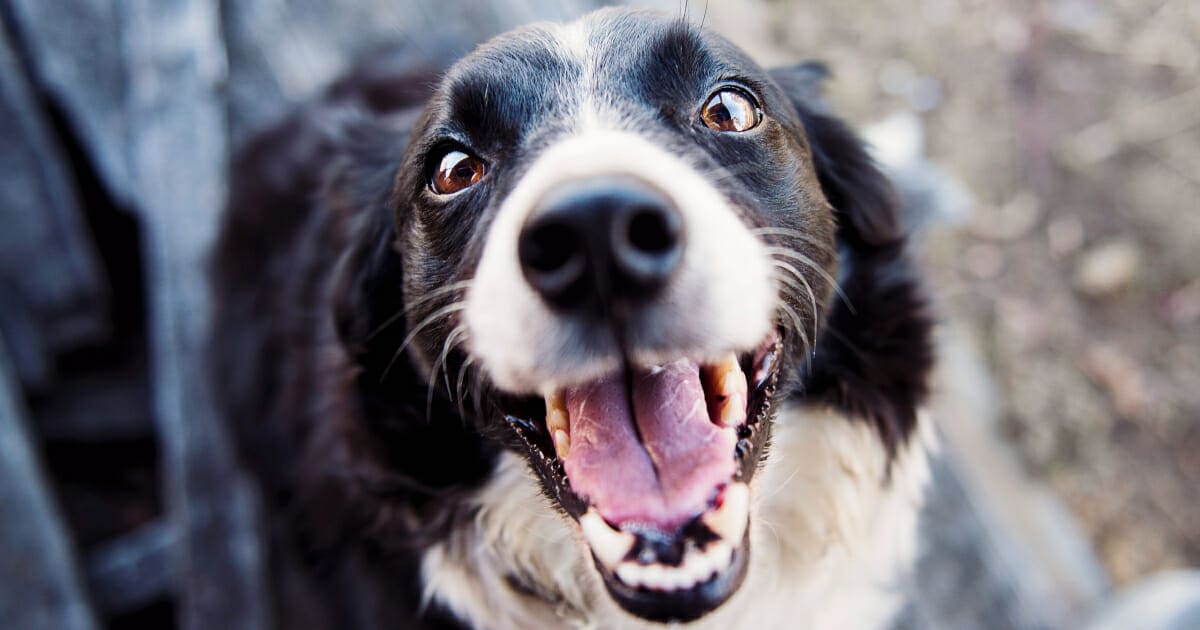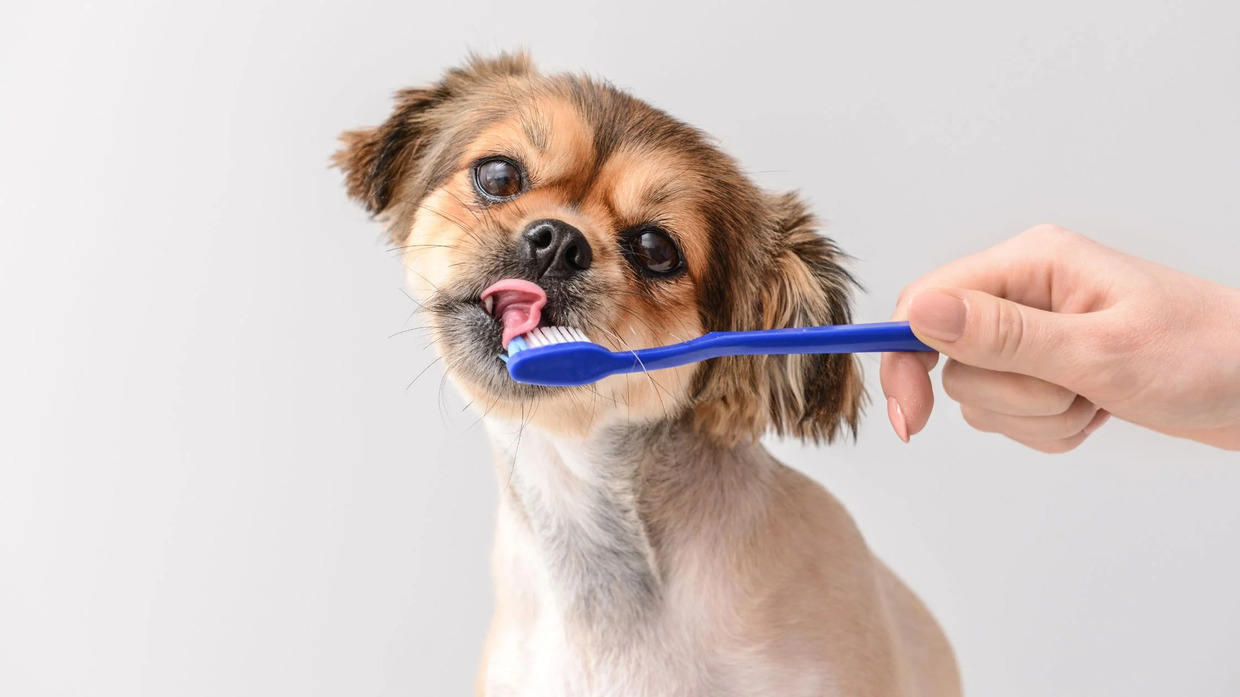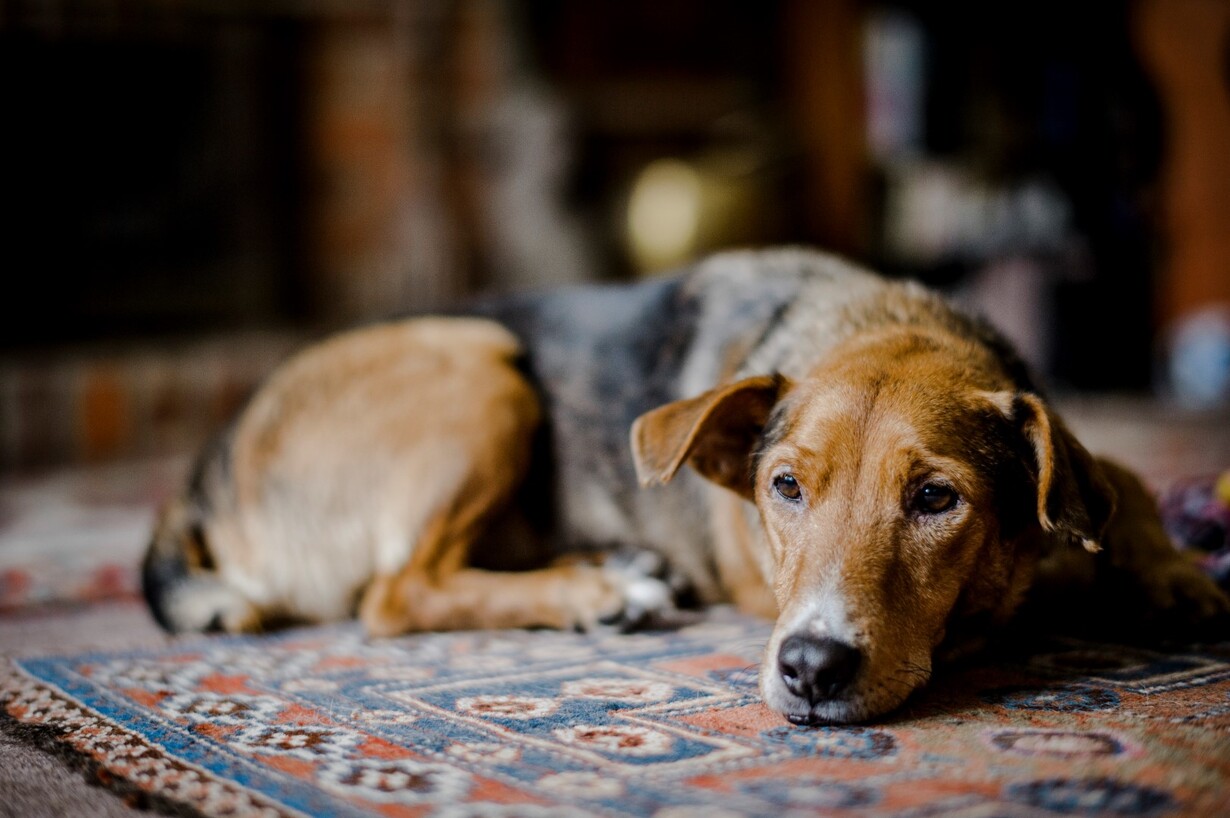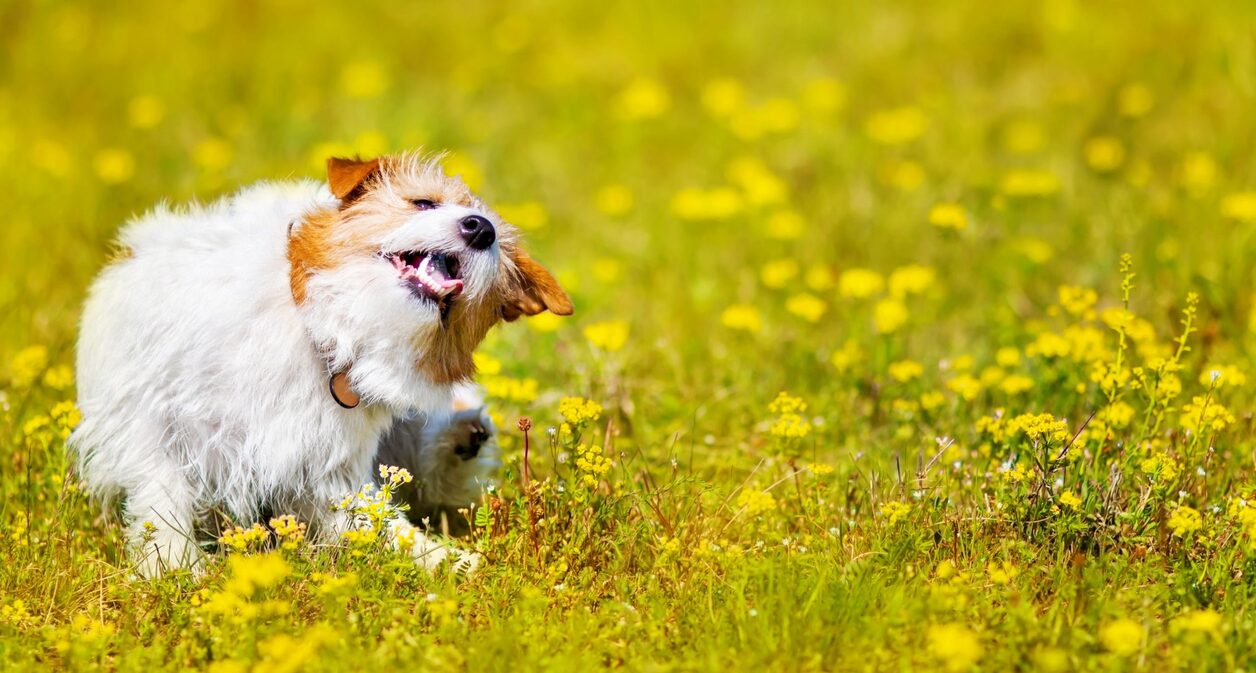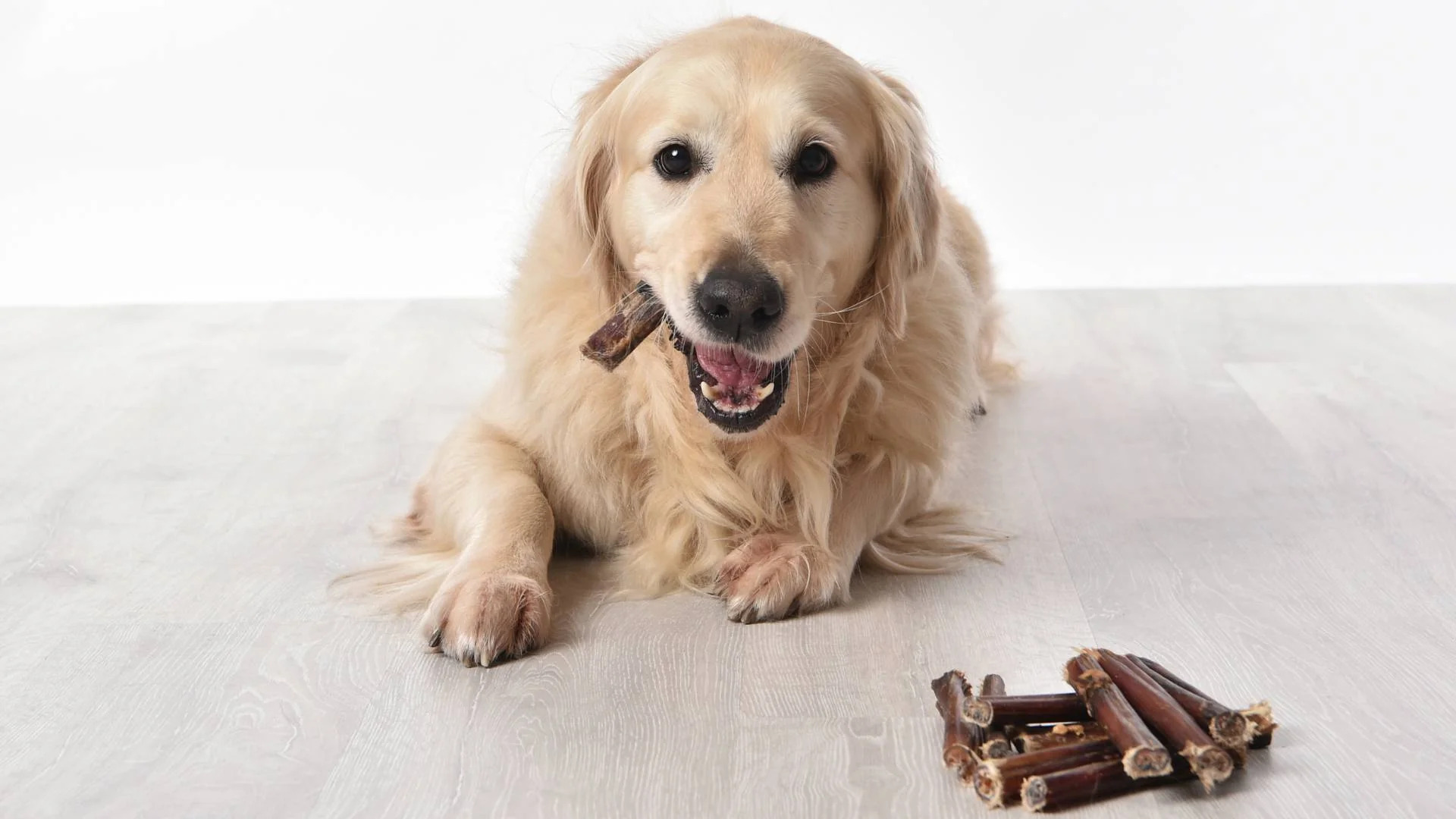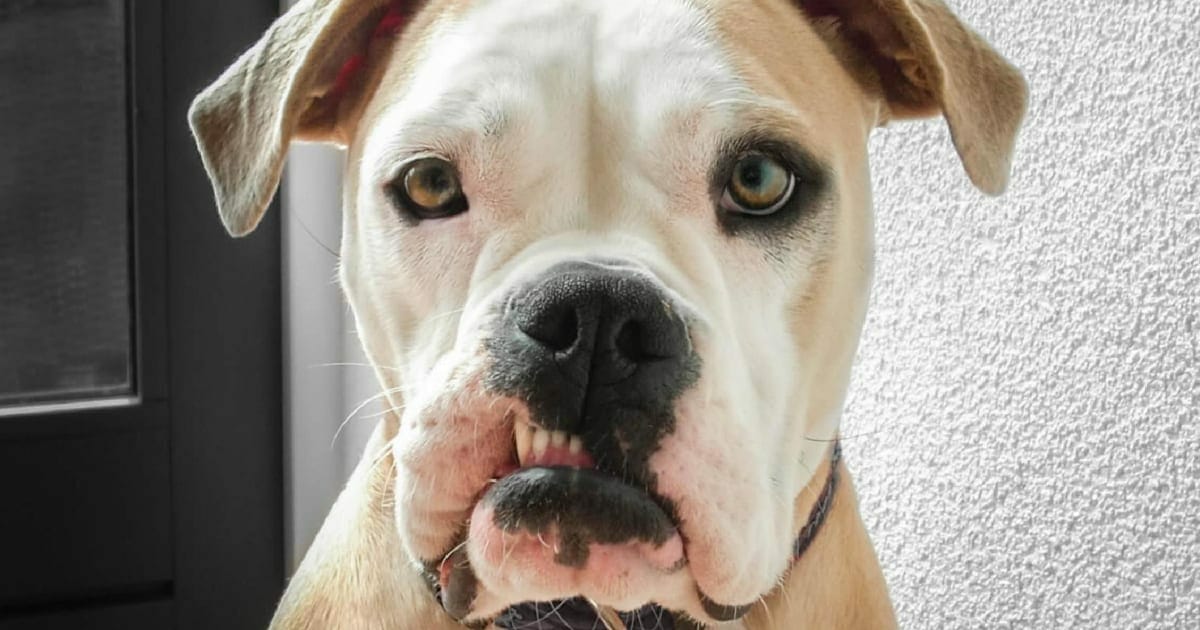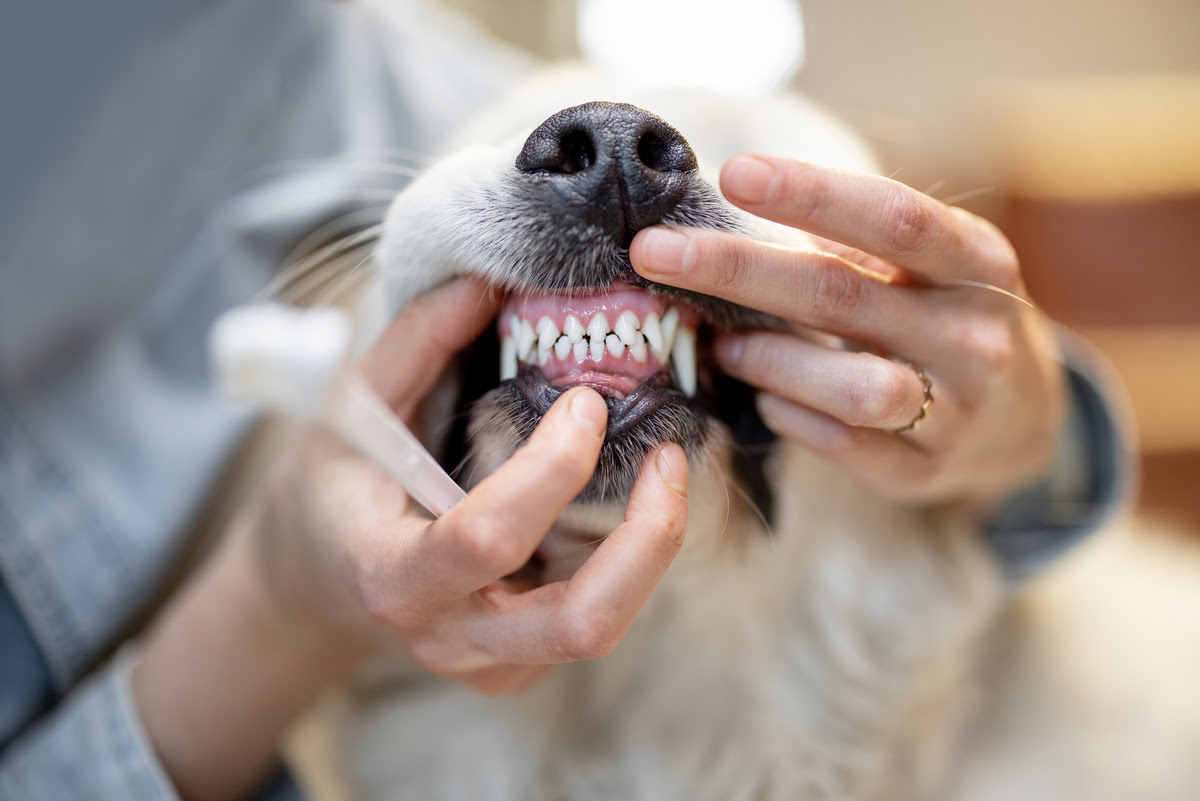Home>Health & Wellness>Common Health Issues>How To Care For A Dog After Dental Surgery
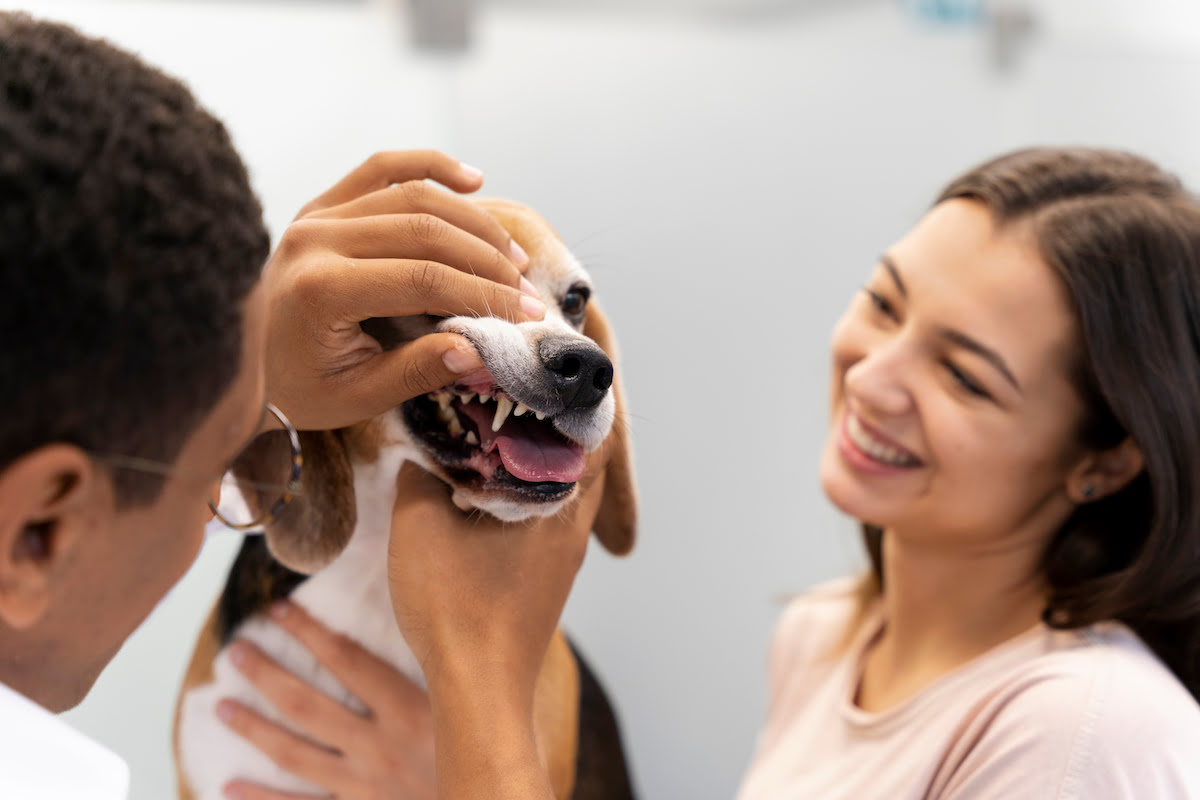

Common Health Issues
How To Care For A Dog After Dental Surgery
Published: January 31, 2024
Learn how to care for your dog after dental surgery and prevent common health issues. Expert tips for post-surgery care and maintenance.
(Many of the links in this article redirect to a specific reviewed product. Your purchase of these products through affiliate links helps to generate commission for Pawsomeoldies.com, at no extra cost. Learn more)
Table of Contents
Introduction
Dental surgery is a common procedure for dogs, often necessary to address various oral health issues such as periodontal disease, fractured teeth, or oral tumors. Just like humans, dogs require proper care and attention following dental surgery to ensure a smooth recovery and minimize discomfort. Understanding the essential steps for post-surgery care is crucial for pet owners to provide the best support for their furry companions during this delicate time.
In this comprehensive guide, we will delve into the crucial aspects of caring for a dog after dental surgery. From preparing for the surgery to post-operative care instructions, pain management, dietary adjustments, and monitoring the recovery process, each step plays a vital role in ensuring your dog's well-being. By following these guidelines, you can help your canine friend recuperate effectively and return to their playful, energetic selves in no time.
As responsible pet owners, it's essential to be well-informed about the post-surgery care requirements and to work closely with your veterinarian to address any concerns or complications that may arise. With patience, love, and proper care, you can support your dog through this recovery period and ensure they regain their oral health and overall vitality.
Read more: Why Is My Dog Sneezing After Dental Surgery
Preparing for Your Dog's Dental Surgery
Preparing for your dog's dental surgery involves several essential steps to ensure a smooth and successful procedure. Before the scheduled surgery date, it's crucial to communicate closely with your veterinarian to understand the pre-surgery requirements and make necessary preparations. Here's a detailed overview of the key aspects to consider when preparing for your dog's dental surgery:
-
Consultation and Evaluation: Schedule a consultation with your veterinarian to discuss the details of the dental surgery. During this appointment, the vet will conduct a thorough oral examination of your dog, assess the extent of the dental issues, and determine the specific procedures required. This evaluation is crucial for creating a tailored treatment plan that addresses your dog's unique oral health needs.
-
Pre-Surgery Instructions: Your veterinarian will provide specific pre-surgery instructions to ensure your dog is adequately prepared. This may include fasting requirements, which typically involve withholding food for a specified period before the surgery to prevent complications during anesthesia. It's important to adhere strictly to these instructions to minimize the risk of aspiration and other anesthesia-related issues.
-
Health Assessment: Before the surgery, your dog will undergo a comprehensive health assessment to evaluate their overall well-being and identify any underlying health conditions that may impact the surgical procedure. This assessment may involve blood tests, urinalysis, and other diagnostic evaluations to ensure your dog is fit for anesthesia and surgery.
-
Anesthesia Protocol: Discuss the anesthesia protocol with your veterinarian to understand the type of anesthesia that will be used and any associated risks. Your vet will explain the anesthesia process, including the monitoring equipment used during the surgery to ensure your dog's safety and comfort.
-
Home Environment Preparation: Create a comfortable and quiet recovery space for your dog at home. Set up a cozy area with soft bedding where your dog can rest and recuperate after the surgery. Keep the environment calm and free from potential stressors to promote a peaceful recovery.
By addressing these crucial aspects of preparation, you can ensure that your dog is well-equipped for the dental surgery and set the stage for a successful and smooth recovery process. Working closely with your veterinarian and following their guidance will help alleviate any concerns and ensure the best possible outcome for your dog's oral health.
Post-Surgery Care Instructions
Following your dog's dental surgery, it is crucial to provide attentive and diligent care to support their recovery process. Your veterinarian will provide specific post-surgery care instructions tailored to your dog's individual needs. These instructions typically encompass various aspects of care, including wound management, medication administration, and monitoring for any signs of complications. Here's a detailed overview of the essential post-surgery care instructions for your dog:
-
Wound Care: Your veterinarian will provide detailed guidance on caring for your dog's surgical wounds. This may involve cleaning the incision site, applying any prescribed topical treatments, and monitoring for signs of infection or abnormal healing. It's important to follow the specific wound care instructions provided by your veterinarian to promote proper healing and reduce the risk of complications.
-
Medication Administration: Your vet will prescribe medications to manage pain, prevent infection, and support the healing process. It's crucial to administer these medications as directed, ensuring the correct dosage and frequency. Pain management is particularly important to keep your dog comfortable during the recovery period. Be sure to follow the medication schedule diligently and seek clarification from your veterinarian if you have any concerns about the prescribed medications.
-
Activity Restriction: Your dog will likely need to limit physical activity during the initial phase of recovery. This may involve restricting exercise, playtime, and other strenuous activities to prevent strain on the surgical site. Your veterinarian will provide specific guidelines regarding activity restriction based on the nature of the surgery and your dog's individual needs.
-
Dietary Considerations: Your vet may recommend a soft or liquid diet for your dog during the immediate post-surgery period. This can help prevent discomfort while ensuring adequate nutrition for recovery. Follow your veterinarian's dietary recommendations closely and gradually transition your dog back to their regular diet as advised.
-
Monitoring for Complications: Keep a close eye on your dog's overall condition and the surgical site. Watch for any signs of excessive swelling, discharge, redness, or unusual behavior. If you notice any concerning symptoms, contact your veterinarian promptly for further evaluation.
-
Follow-Up Appointments: Your veterinarian will schedule follow-up appointments to assess your dog's progress and remove any sutures if necessary. Attend these appointments as scheduled to ensure that your dog's recovery is progressing as expected.
By adhering to these post-surgery care instructions and maintaining open communication with your veterinarian, you can provide the best possible care for your dog during the crucial recovery period. Your attentiveness and commitment to following the prescribed care guidelines will contribute significantly to your dog's successful recuperation after dental surgery.
Monitoring Your Dog's Recovery
Monitoring your dog's recovery after dental surgery is a critical aspect of post-operative care. It involves observing your dog's behavior, physical condition, and the healing progress of the surgical site to ensure a smooth and successful recuperation. By staying vigilant and proactive in monitoring your dog's recovery, you can promptly address any concerns and provide the necessary support for their healing journey.
Observing Behavior and Activity Levels
During the initial phase of recovery, observe your dog's behavior and activity levels closely. It's normal for dogs to experience some degree of lethargy and reduced energy following surgery. However, monitor for any significant changes in behavior, such as excessive restlessness, agitation, or reluctance to move. Conversely, if your dog appears unusually inactive or unresponsive, it may indicate discomfort or other underlying issues that require attention.
Read more: How To Find Affordable Dental Care For Dogs
Assessing Appetite and Hydration
Maintaining adequate nutrition and hydration is crucial for your dog's recovery. Monitor their appetite and water intake, ensuring they are consuming food and fluids as recommended by your veterinarian. Changes in appetite, refusal to eat, or signs of dehydration should be promptly reported to your vet. Encouraging your dog to drink water and offering easily digestible, palatable food can support their recovery and prevent nutritional deficiencies.
Checking the Surgical Site
Regularly inspect the surgical site as part of your monitoring routine. Look for signs of inflammation, excessive swelling, or discharge, which may indicate infection or poor healing. Additionally, observe the incision area for any redness, warmth, or unusual odor. If you notice any abnormalities or concerns related to the surgical site, contact your veterinarian immediately for further evaluation and guidance.
Monitoring Pain Management
Pain management is a crucial aspect of your dog's recovery. Monitor their comfort level and response to prescribed pain medications. Look for signs of discomfort, such as whimpering, restlessness, or reluctance to eat. If you observe any indications of pain, discuss this with your veterinarian to ensure that appropriate measures are in place to alleviate your dog's discomfort effectively.
Recording Progress and Concerns
Maintain a record of your dog's recovery progress, including observations of behavior, appetite, and any notable changes in the surgical site. This documentation can help track the trajectory of your dog's recovery and provide valuable information for your veterinarian during follow-up appointments. Additionally, if you have any concerns or questions about your dog's recovery, note them down to discuss with your vet at the next available opportunity.
By actively monitoring your dog's recovery and promptly addressing any emerging issues, you play a pivotal role in supporting their healing process. Open communication with your veterinarian and a proactive approach to monitoring will contribute to a successful and smooth recovery for your beloved canine companion.
Managing Pain and Discomfort
Managing your dog's pain and discomfort following dental surgery is a crucial aspect of their recovery journey. Just like humans, dogs experience varying levels of discomfort after undergoing surgical procedures, and it's essential to prioritize their comfort and well-being during this sensitive period. Effective pain management not only alleviates your dog's suffering but also promotes a smoother recovery process. Here's a detailed overview of the strategies and considerations for managing your dog's pain and discomfort after dental surgery.
Pain Assessment
Before implementing pain management strategies, it's important to assess your dog's pain levels accurately. While dogs may not express pain in the same way humans do, there are subtle indicators that can signal discomfort. Watch for signs such as restlessness, vocalization, changes in appetite, reluctance to move, and altered behavior. Additionally, observe your dog's body language and facial expressions for cues of distress or discomfort. By recognizing these subtle signals, you can gauge the intensity of your dog's pain and tailor the management approach accordingly.
Veterinary Guidance
Consult your veterinarian for specific pain management recommendations tailored to your dog's individual needs. Your vet may prescribe pain medications, such as non-steroidal anti-inflammatory drugs (NSAIDs) or other analgesics, to alleviate your dog's discomfort. It's crucial to administer these medications as directed, ensuring the correct dosage and frequency. Your veterinarian will provide detailed instructions on the safe and effective use of pain medications, including potential side effects to watch for and the duration of treatment.
Environmental Comfort
Creating a comfortable and soothing environment for your dog can contribute to pain management. Provide a quiet and cozy space for your dog to rest, away from loud noises and excessive activity. Soft bedding and familiar comforts, such as their favorite toys or blankets, can offer reassurance and promote relaxation. By minimizing stressors and ensuring a calm environment, you can help alleviate your dog's discomfort and promote a sense of security during the recovery period.
Read more: How To Care For A Dog With Arthritis
Physical Support
Assist your dog with gentle movements and positioning to minimize discomfort. If your dog experiences mobility challenges or stiffness after surgery, provide support when standing, lying down, or navigating the recovery space. Avoid activities that may strain the surgical site and offer gentle, supportive assistance as needed. Additionally, maintain a comfortable room temperature to prevent temperature-related discomfort, especially if your dog is recovering from anesthesia.
Holistic Approaches
In addition to conventional pain medications, holistic approaches can complement pain management efforts. Techniques such as gentle massage, acupuncture, and therapeutic touch may help alleviate discomfort and promote relaxation. Always consult your veterinarian before incorporating holistic therapies to ensure they are safe and appropriate for your dog's specific condition and recovery stage.
Ongoing Observation
Continuously monitor your dog's response to pain management strategies and observe for any changes in their comfort level. If you notice persistent signs of discomfort or unusual behavior, promptly communicate with your veterinarian to discuss potential adjustments to the pain management plan. Open communication and proactive observation play a vital role in ensuring that your dog receives the most effective pain relief throughout their recovery.
By implementing these comprehensive pain management strategies and working closely with your veterinarian, you can provide the best possible support for your dog's comfort and well-being after dental surgery. Prioritizing pain management not only enhances your dog's recovery experience but also strengthens the bond of trust and care between you and your beloved canine companion.
Adjusting Your Dog's Diet
Adjusting your dog's diet following dental surgery is a crucial aspect of their post-operative care. The dietary adjustments aim to support the healing process, minimize discomfort, and ensure that your dog receives adequate nutrition during the recovery period. Your veterinarian will provide specific recommendations tailored to your dog's individual needs, taking into account the nature of the surgery and any oral health considerations. Here's a detailed overview of the key considerations when adjusting your dog's diet after dental surgery.
Soft or Liquid Diet Transition
Your veterinarian may recommend transitioning your dog to a soft or liquid diet immediately following dental surgery. This dietary adjustment helps prevent discomfort while ensuring that your dog receives essential nutrients in a form that is easier to consume and digest. Soft foods, such as canned or pouched dog food, or specially formulated veterinary diets, can provide the necessary nourishment without exerting excessive pressure on the surgical site.
Nutritional Requirements
During the initial phase of recovery, it's essential to prioritize your dog's nutritional needs. Ensure that the soft or liquid diet prescribed by your veterinarian meets the required nutritional standards, including adequate protein, vitamins, and minerals. Opt for high-quality, easily digestible food options that support the healing process and overall well-being. Additionally, discuss any specific dietary considerations, such as calorie adjustments or nutrient supplementation, with your veterinarian to address your dog's individual requirements.
Gradual Transition to Regular Diet
As your dog progresses through the recovery period, your veterinarian may recommend a gradual transition back to their regular diet. This transition allows your dog's oral tissues to heal gradually while reintroducing their familiar food choices. Follow your vet's guidance regarding the timing and pace of the diet transition, ensuring that it aligns with your dog's healing progress and overall comfort.
Hydration and Fluid Intake
Encouraging adequate hydration is essential for your dog's recovery. Ensure that fresh, clean water is readily available at all times, especially when transitioning to a soft or liquid diet. Monitor your dog's water intake and encourage them to drink regularly to prevent dehydration, support healing, and maintain overall well-being.
Read more: Who Performs Dental Prophylaxis In Dogs
Dietary Restrictions and Chewing Limitations
Your veterinarian may advise temporary dietary restrictions or limitations on chewy or hard treats to prevent strain on the surgical site. Adhere to these recommendations diligently, avoiding foods or treats that may pose challenges for your dog's oral comfort and healing. By following these dietary restrictions, you can contribute to a smoother recovery and minimize the risk of complications.
By adjusting your dog's diet in accordance with your veterinarian's recommendations, you play a pivotal role in supporting their recovery journey. Prioritize their nutritional needs, follow the prescribed dietary adjustments, and maintain open communication with your veterinarian to ensure that your dog receives the best possible dietary support during this crucial healing period.
Keeping Your Dog Comfortable
Ensuring your dog's comfort is a fundamental aspect of their recovery journey after dental surgery. By creating a soothing and supportive environment, you can alleviate their stress, minimize discomfort, and promote a sense of security during this delicate period.
Cozy Recovery Space
Designate a quiet and comfortable area at home where your dog can rest undisturbed. Provide soft bedding, blankets, and familiar toys to create a cozy and reassuring environment. A designated recovery space helps minimize external stressors and allows your dog to relax and recuperate peacefully.
Temperature and Lighting
Maintain a comfortable room temperature to prevent your dog from feeling too cold or too warm. Adequate lighting, natural or artificial, can contribute to a calming atmosphere. Ensure that the recovery space is well-lit during the day and dimly lit in the evening to support your dog's natural sleep-wake cycle.
Gentle Affection and Reassurance
Offer gentle affection and reassurance to your dog, providing comfort through physical touch and soothing words. Your reassuring presence can alleviate anxiety and promote a sense of security. However, be mindful of your dog's need for rest and avoid overstimulation during the initial recovery phase.
Minimizing Stressors
Minimize exposure to loud noises, excessive activity, and unfamiliar visitors during the recovery period. Dogs are sensitive to changes in their environment, and a calm, predictable atmosphere can help reduce stress and promote relaxation. Additionally, if you have other pets, ensure that interactions are gentle and supervised to prevent unnecessary strain on your recovering dog.
Pain Management Support
Continue to administer prescribed pain medications as directed by your veterinarian to ensure your dog's comfort. Monitor their response to pain management and promptly communicate with your vet if you observe any signs of discomfort. Effective pain management plays a crucial role in keeping your dog comfortable and promoting a positive recovery experience.
Encouraging Rest and Relaxation
Encourage your dog to rest and relax, allowing them to dictate the pace of their activities. Limit physical exertion and provide opportunities for quiet, uninterrupted rest. By respecting your dog's need for relaxation, you contribute to their overall comfort and well-being during the recovery process.
Open Communication with Your Veterinarian
Maintain open communication with your veterinarian regarding any concerns or observations related to your dog's comfort. Your vet can provide valuable guidance and adjustments to support your dog's comfort and recovery. By working collaboratively with your veterinarian, you can ensure that your dog receives the best possible care and support throughout the recovery period.
By implementing these strategies and maintaining a supportive, nurturing environment, you can significantly contribute to your dog's comfort and well-being as they navigate the post-surgery recovery phase. Your attentive care and commitment to their comfort play a vital role in promoting a smooth and positive recovery experience.
Follow-Up Care and Check-Ups
After your dog's dental surgery, follow-up care and check-ups are essential components of their overall recovery process. These post-operative appointments provide an opportunity for your veterinarian to assess your dog's healing progress, address any concerns, and ensure that they are on track for a successful recovery. Here's a detailed overview of the significance of follow-up care and the key considerations during check-up appointments.
Importance of Follow-Up Care
Follow-up care appointments allow your veterinarian to monitor the healing of the surgical site, evaluate your dog's overall well-being, and make any necessary adjustments to the treatment plan. These appointments are crucial for identifying and addressing potential complications early, ensuring that your dog's recovery remains on a positive trajectory. Additionally, follow-up care provides an opportunity for you to discuss any observations or questions regarding your dog's post-surgery experience, fostering open communication and collaboration with your veterinarian.
Suture Removal and Wound Assessment
During the initial follow-up appointment, your veterinarian may assess the surgical site, check for signs of inflammation or infection, and determine if suture removal is necessary. If sutures were used during the surgery, your vet will carefully remove them, ensuring that the incision has healed sufficiently. This process allows for a thorough evaluation of the wound's progress and provides an opportunity to address any concerns related to the healing process.
Read more: What Diet For A Dog With Gallbladder Surgery
Oral Health Evaluation
In addition to assessing the surgical site, your veterinarian will evaluate your dog's oral health during follow-up appointments. This evaluation may involve examining the remaining teeth, assessing gum health, and discussing oral hygiene practices to support long-term dental wellness. By monitoring your dog's oral health post-surgery, your vet can provide guidance on preventive care and address any emerging issues that may impact their dental well-being.
Pain Management and Medication Adjustment
Follow-up appointments also serve as an opportunity to review your dog's pain management regimen and make any necessary adjustments to their medication. Your veterinarian will assess your dog's comfort level, discuss any lingering discomfort, and ensure that the prescribed pain relief measures are effectively supporting their recovery. This proactive approach to pain management contributes to your dog's overall comfort and well-being during the recovery period.
Long-Term Oral Care Recommendations
As part of the follow-up care process, your veterinarian may provide long-term oral care recommendations tailored to your dog's specific needs. These recommendations may include dental hygiene practices, dietary considerations, and preventive measures to maintain your dog's oral health in the long run. By implementing these recommendations, you can support your dog's ongoing dental wellness and minimize the risk of future oral health issues.
Open Communication and Collaboration
Throughout the follow-up care and check-up appointments, maintaining open communication with your veterinarian is paramount. Share any observations, questions, or concerns related to your dog's recovery, ensuring that your vet has a comprehensive understanding of your dog's post-surgery experience. Collaborating with your veterinarian fosters a proactive and supportive approach to your dog's recovery, ultimately contributing to their overall well-being.
By prioritizing follow-up care and actively participating in check-up appointments, you play a pivotal role in supporting your dog's successful recovery after dental surgery. These appointments not only provide valuable insights into your dog's healing progress but also strengthen the bond between you, your dog, and your veterinary care team. Through ongoing collaboration and attentive care, you can ensure that your dog receives the best possible support as they regain their oral health and vitality.
